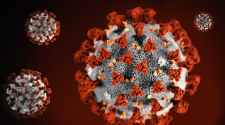A mechanism which enables infants to absorb large amounts of calcium has been identified in mice by a group of researchers at the University of Alberta. The findings are published in the journal Cellular and Molecular Gastroenterology and Hepatology.
Although the process of calcium absorption in adult mammals had been previously elucidated to take place in the upper part of the small intestines, the mechanism had not been understood in infants until now.
Calcium absorption is an important step in bone formation, with a lack of optimal bone mineralization resulting in diseases such as osteoporosis.
We interviewed Megan Beggs, Registered Dietician/PhD candidate and Dr Todd Alexander, Professor of Pediatrics at the University of Alberta, to learn more about the study and the wider implications the findings could have on preventing and treating bone diseases.
Anna MacDonald (AM): What inspired the study of calcium absorption in infants? Were there any particular motivators that got the project started?
Dr Todd Alexander (TA): Megan Beggs (first author) is a pediatric dietitian, and I (principle investigator) am a pediatric nephrologist. Clinically, we see and treat infants and children with poor bone mineralization and altered calcium homeostasis (i.e. altered blood calcium levels). In looking to the literature to better understand why this happens, we realized that almost nothing was known about how even healthy infants and children hold on to enough calcium to build bones. This is important as this happens only early in life enabling us to reach peak bone mineral density by early adulthood. Trying to understand how this process works was the motivation for Megan’s PhD work, which has ultimately led to the findings in the current study. We realized that we first must understand normal physiology before understanding why some people do not develop optimal bone mineralization and subsequently osteoporosis and fractures.
AM: Can you give us an overview of your findings?
Megan Beggs (MB): In this study, we delineated specific molecular pathways of intestinal calcium absorption across different ages using a mouse model. We noted that in infants, a pathway of active calcium uptake was present in segments that make up about 90% of the length of the small intestine. We further identified two specific calcium channels, that are central to calcium absorption. When one of these proteins was genetically deleted, it lead to delayed bone mineralization in the pups.
AM: How does this compare to calcium absorption in adults?
TA: The pathways identified above were only present in infant mice that were still suckling, which is the mouse equivalent to breastfeeding. In the first segment of the small intestine (called the duodenum) which makes up the remaining 10% of small intestine length, a pathway of active calcium absorption is present only in the older mice but not in the infants. The infants and older mice therefore have a reciprocal pattern of intestinal calcium absorption. This is likely the same in human children and adults.
AM: What impact could these findings have on dietary guidelines for infants, such as weaning age?
MB: Bone health outcomes are used to derive dietary calcium requirements for ages 12 months and up. Such data for infants aged 0-12 months is sparse and therefore the requirement is based upon a calculated average intake. Infants 0-6 months require 200 mg of calcium daily and infants 6-12 months (the period of weaning) require 260 mg calcium per day. The findings of the current study provide us with an understanding of how this calcium is taken up from the diet but are not likely to change current recommendations. If further research leads us to find that these pathways are altered in some infants i.e. ones that are bottle fed, it may help to determine if increased requirements are needed for certain populations.
AM: Does formula see the same response as breastmilk?
MB: It is known that to promote normal growth, infant formula must contain double the concentration of calcium as what is found in breast milk. It is thought that this is due to decreased absorption of the calcium in formula. Our current study suggests that a bioactive compound in breastmilk enhances calcium absorption via the pathways we identified. Further research is needed to test this hypothesis and identify what the compound(s)/molecules may be.
AM: How could the findings be harnessed to develop treatments for bone diseases such as osteoporosis?
TA: Osteoporosis is a disease that affects 1 in 3 women and 1 in 5 men with debilitating consequences on quality of life. If we can identify bioactive compounds in breast milk that contribute to a positive calcium balance early in life, one could potentially give them to adults/seniors to offset later bone mineral loss or even help provide a positive calcium balance and increased bone mineralization.
Todd Alexander and Megan Beggs were speaking to Anna MacDonald, Science Writer for Technology Networks.














